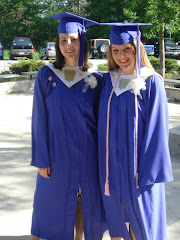“Citizen Kane,” directed by Orson Welles (1941)
Synopsis: The film traces the life of Charles Foster Kane, which is rumored to really be a movie tracing William Randolph Hearts. The movie shows Kane’s career in the publishing world. Kane’s career stared as an idealistic social service, but it quickly turned him into a tyrant publisher, obsessed with power. Kane’s life is shown through flashbacks during newspaper reporter’s interviews with Kane’s friends and family, in pursuit to discover what Kane’s last words “Rosebud,” meant.
Academy Awards Controversy: “Citizen Kane,” did not win Best picture, for once Hearst found out about the film he was not only outraged that the film was about him, but more so angered by the portrayal of mistress Marion Davies, whom is Susan Alexander in the film. Because of the enraged Hearts “Citizen Kane,” did not receive a golden man, but just loud Boos from the audience.
I am in love with this film for two reasons
1) Flashbacks: I love films that tell their plotline in a unique way. “Citizen Kane,” doesn’t just have a normal plotline. It begins with newsreel of Charles Foster Kane, and the audience clueless of who this man is, then newsreel is stopped and the producer of the newsreel sends a newspaper reporter to discover what Kane’s last word “rosebud,” meant. The reporter then sets out to interview Kane’s friends and family, Kane’s story is told through their interviews. The film is not just a biography of Charles Kane, but also the reporter’s quest to discover the meaning of “rosebud.”
2) Film technique: I am not necessarily in love with “Citizen Kane,” for the story, but more so the movie-making techniques Welles’ uses. The movie is often shot through deep focus, this means that the foreground, background, and anything else are all in sharp focus. This deep focus shot is most easily scene during the flashback of Kane’s childhood (I showed it in class, and a total of three people watched it). The flashback shows Kane outside playing in the snow while his mother is inside basically selling him off. Everything is clearly in focus, including Kane outside through the window, and a top hat on the table. This is one the most famous scenes in film history. These deep focus shots were done by cinematographer, Gregg Toland. Toland was determined to have everything in deep focus and so when this was impossible he used an optical printer, which visually layered one piece of film onto another to make the whole screen to appear in focus. The optical printer was used during the scene when Kane finished a bad review of his mistress’s (Susan Alexander) opera, while at the same time firing the person who wrote the review.
Deep focus shots were also a result of in-camera effects. This technique is shown when Susan Alexander tries to commit suicide and Kane breaks into her room. While Kane breaks into the room the medicine bottle and spoon are in close-up in the foreground. The foreground was shot first with the background in the dark, and then this was reversed so the background was lit.
Welles and Toland often played around with lighting during the film. They often shaded characters faces when they were ashamed, or something bad was to occur. This is shown when Kane’s wife discovers he is having an affair and her face remains in shadow. Another incident is when Kane talks about having an “honest paper,” his face is shadowed indicating that this idea will end badly. Welles also keeps the newspaper reporter’s face shadowed the entire time, indicating that Welles want him to remain anonymous, for he is not relevant in Kane’s life.
If any of you intend on watching any of the films I write about I recommend you see “Citizen Kane,” if you have not already done so.
Subscribe to:
Post Comments (Atom)

1 comment:
CK is not a film i like to watch repeatedly--a bit rigid and dry. But it really is, as you point out, shot with such precision it catches me off-guard every time. Hard to think that film was made in 1941.
Post a Comment